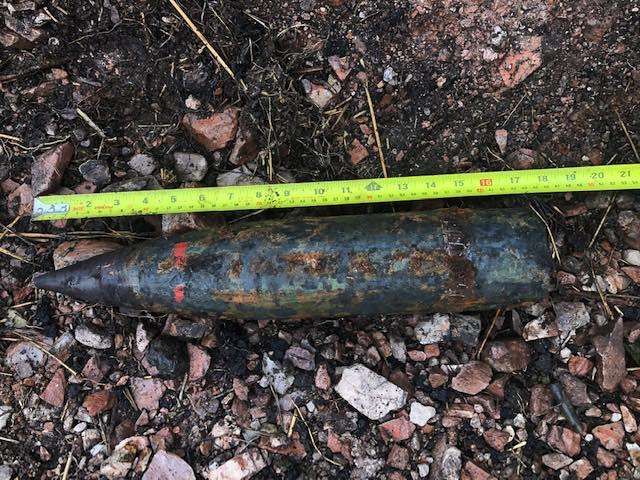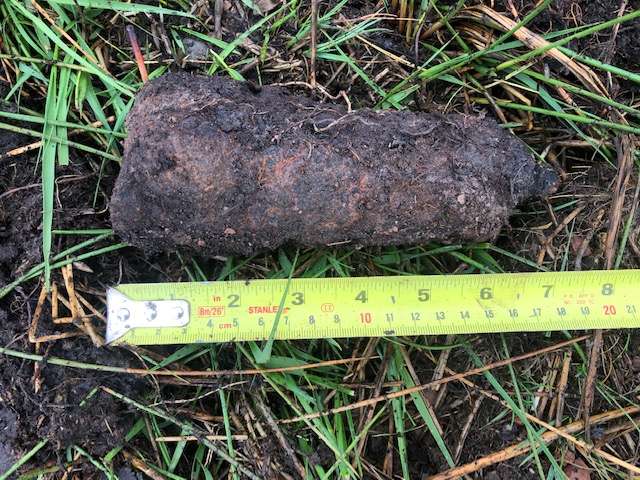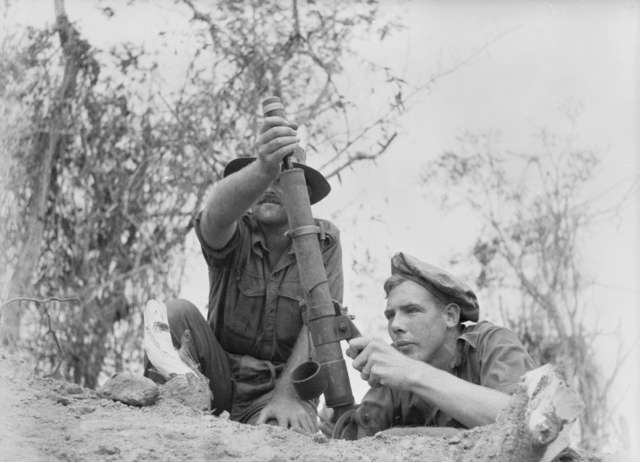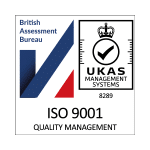More items of Unexploded Ordnance (UXO) were safely recovered last week by our team supporting planned excavation work as part of a new wind farm installation in Scotland.
Following an initial non-intrusive survey at one of the proposed turbine locations, additional support work led to the discovery of numerous 2-inch mortars and another 25lb projectile.
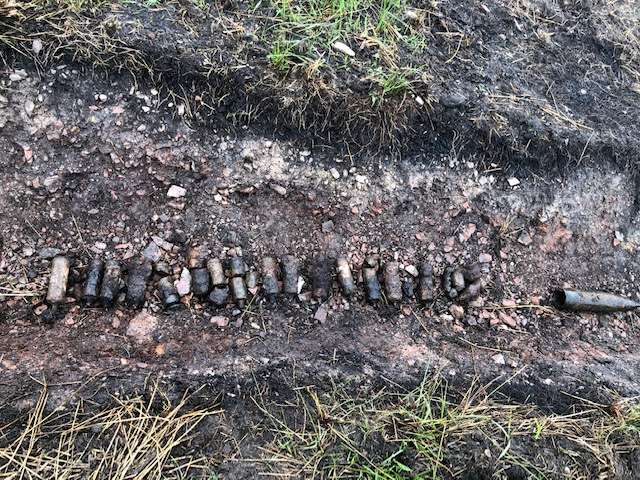
Image showing a birds eye view of a shallow excavated trench which contained a row of over a dozen buried WWII-era mortar rounds and a 25lb projectile which was discovered on a wind farm project in Scotland. Image source: 1st Line Defence.
Ten of the mortars were classified as ‘live’ by our UXO Specialist on-site, with seven others identified as being inert. These were all quickly and safely removed/destroyed so that works could continue safely. The projectile was also identified as inert and was removed from site.
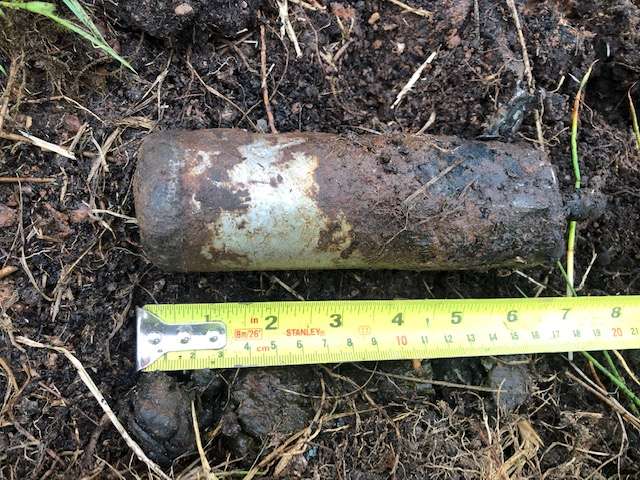
Image showing a 2-inch WWII-era mortar round which was discovered on a Scottish wind farm project by 1st Line Defence. Image source: 1st Line Defence.
Image showing a 25lb WWII-era projectile which was discovered on a Scottish wind farm project by 1st Line Defence. Image source: 1st Line Defence.
Image showing a WWII-era 2-inch mortar round in poor condition which was discovered on a Scottish wind farm project by 1st Line Defence. Image source: 1st Line Defence.
1st Line Defence are currently undertaking additional detailed research into the history of the site, to try and understand more about how the area was used, and what other types of weaponry may have been deployed.
The site is part of a much larger zone which is designated on 1945 mapping as an armaments training area. The find of the mortars indicates that this was not just an artillery range, but was utilised for training and exercises with other types of weaponry, including 2-inch mortars.
History of the 2-inch mortar
The 2-inch mortar was a British infantry weapon developed during the 1930s, and was designed to fire a small mortar bomb weighing around 1kg to a range of around 500 yards.
The 3-inch and other mortars with longer barrels could be ‘drop fired’ (where the bomb was dropped down the tube and a pin in the base of the barrel struck the detonator in the tail of the bomb), but the shorter barrel of the 2-inch mortar tube meant a trigger mechanism was used instead.
Operating the mortar was accomplished by a ‘loader’, who dropped a bomb into the barrel, and a ‘firer’ who lined up the white line on mortar barrel to the target and pulled the trigger lever (see image below).
Due to its small size (for ease and simplicity), the mortar had no forward strut or bipod like larger designs needed. The barrel was simply held at the correct angle, and aiming was by eye and relied on the firer’s judgment and experience.
Image showing Australian infantrymen using a 2-inch (51 mm) mortar at New Guinea in 1945.
Therefore, they were often not the most accurate weapon choice, and generally the impact area on a range was quite large –and it will be interesting to see if the 1st Line Defence Team recover more unexploded ordnance during the next phase of support work… and we’ll keep you updated.
How can 1st Line Defence help?
If you have any questions about Intrusive UXO Surveys or UXO Risk Assessments or mitigation in general, contact one of our friendly Sales Team on + 44 (0) 1992 245020 or info@1stlinedefence.co.uk. We’re always happy to help and provide guidance for your current or future site projects – no matter how big or small.
